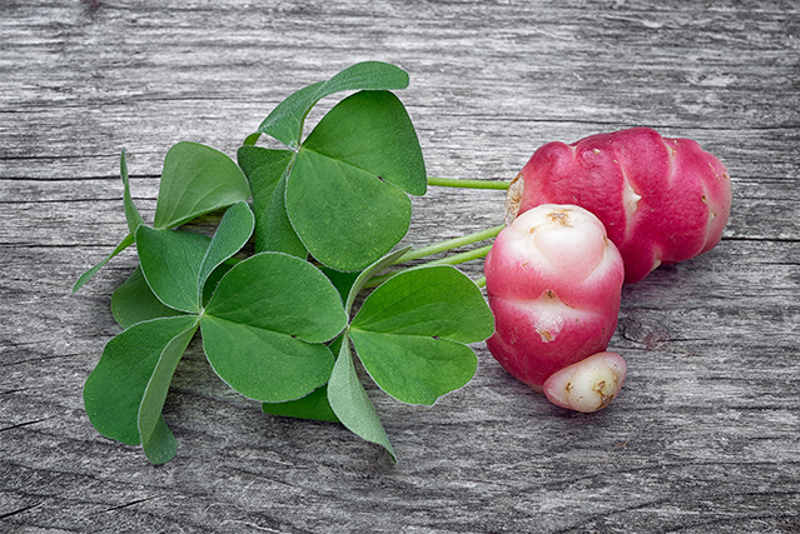Yates Account
Join now
Create a Yates account today!
Sign up to join the Yates Garden Club for monthly e-mails packed with seasonal inspiration, tips for success & exclusive promotions.
Plus if you’re a Garden Club member you can take part in the Yates Growing Community - a blog to share successes, get advice & win prizes in fun challenges along the way!

Forgot password
Enter the email address associated with your account, and we'll email you a new password.

Even more confusingly, the rest of the world can’t agree on what a yam is either! In the USA, ‘yam’ refers to Ipomoea batatas, which is basically a kūmara. In most other regions, when somebody says ‘yam’ they mean Dioscorea alata (known here in NZ as Purple Yam or Ube). So for the record, when we mention yams, we’re really talking about oca.
New Zealand Yam has distinctive segmented-looking tubers with a glossy sheen to them, approximately 15cm long. Colour is usually pinky-red, but also can be bright apricot or yellow. The tubers are sweet tasting with just a hint of lemon flavour. They’re great for roasting, steaming, stir fries, boiling or mashing; you can use them just like potatoes. The tubers store really well and don’t need to be peeled.
NZ yams are packed with carbohydrates, folate and vitamins A and B6. They can be sliced raw into salads to add tangy zest, but because they have a high oxalate content, they’re usually cooked to help reduce their tartness.
How to grow NZ yams in a garden
- You can buy yams in the supermarket, put some nice big specimens aside and wait for their eyes to start sprouting, just like seed potatoes. When they sprout, they’re ready to plant out (when all danger of frost has passed, from late October).
- Soil must be well-drained. Enrich it by digging in compost & Yates Thrive Natural Blood & Bone with Seaweed. If the soil is clay based, add some gypsum and fork it in well.
- Prepare furrows or mounds, spacing sprouted tubers apart at about 45 cm. Plant at a depth of 10-12cm. Place the new sprouts facing upwards and water in well.
- Water at least twice a week, depending on weather conditions, to improve yields.
- Light mulching with organic mulch like bark chips, pea or lucerne straw will ensure moisture retention in the soil.
- During flowering and fruiting stages feed weekly with Yates Thrive Natural Fish Seaweed+ Plant Food Concentrate.
- Tubers can push up through the soil, so mounding them with extra soil might be needed.
- NZ Yam rewards patience, because the tubers put on most of their growth late in the season. In cooler regions, harvest after the first or second frost, because the cold improves the flavour and sweetness.
- Dig out all the soil into a wheelbarrow and sift through it to find all the tubers. Don’t leave any little tubers or scraps behind, or they’ll aggressively sprout next season.
- Tubers can be stored in a cool, dry, well-aired place for a few months.
Growing tips
- If you leave the tubers lying out in the sun for a week or so after harvesting, it helps to sweeten them up by reducing the oxalic acid in the skin.
- This plant is from the Oxalis family, so it can be a bit of an invasive thug in a garden bed. It’s wise to plant them in containers, or dedicate a specific spot for cultivating them.

How to grow NZ yams in a pot
1. Choose a number of medium sized pots, that hold at least 3L of potting mix and position in sun or part shade. Fill with quality potting mix, such as Yates Premium Potting Mix. Place a sprouted tuber into each pot, 8-10 cm deep. Plant with the sprouts facing upwards and water in well.
2. Water regularly through summer to ensure good sized tubers. Feed fortnightly with Yates Thrive Natural Fish Seaweed+ Plant Food Concentrate.
















Share
Share this article on social media